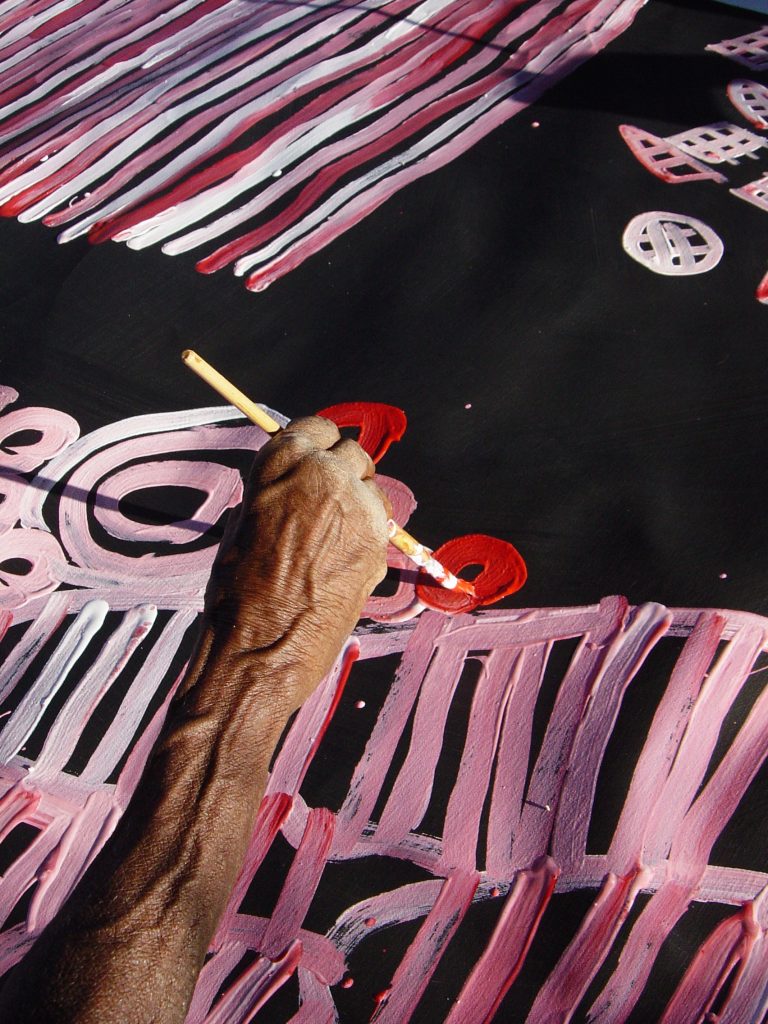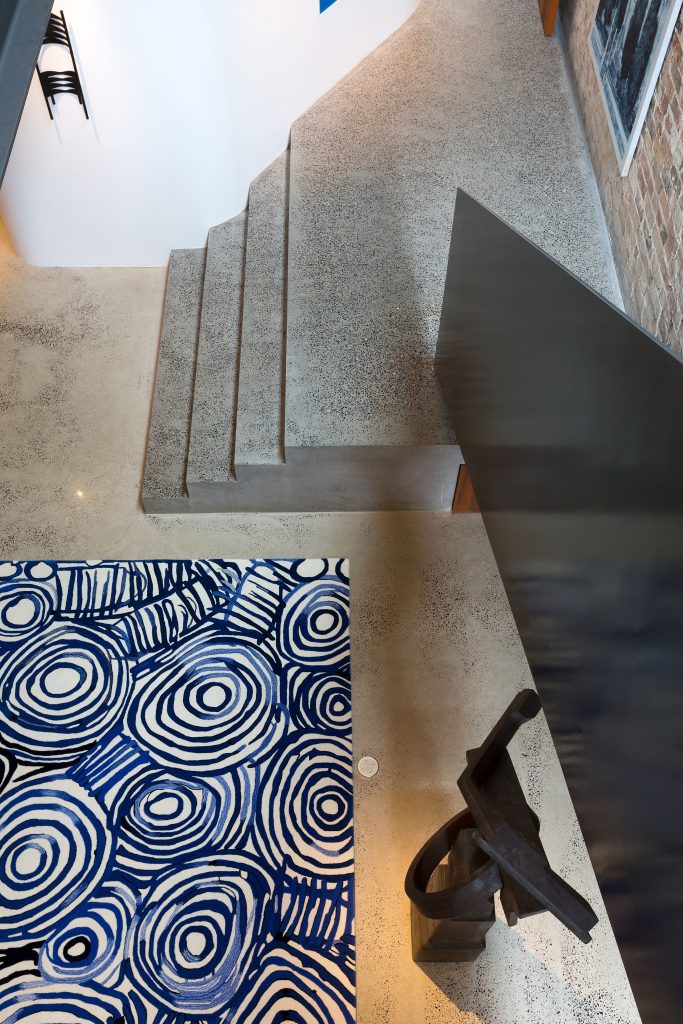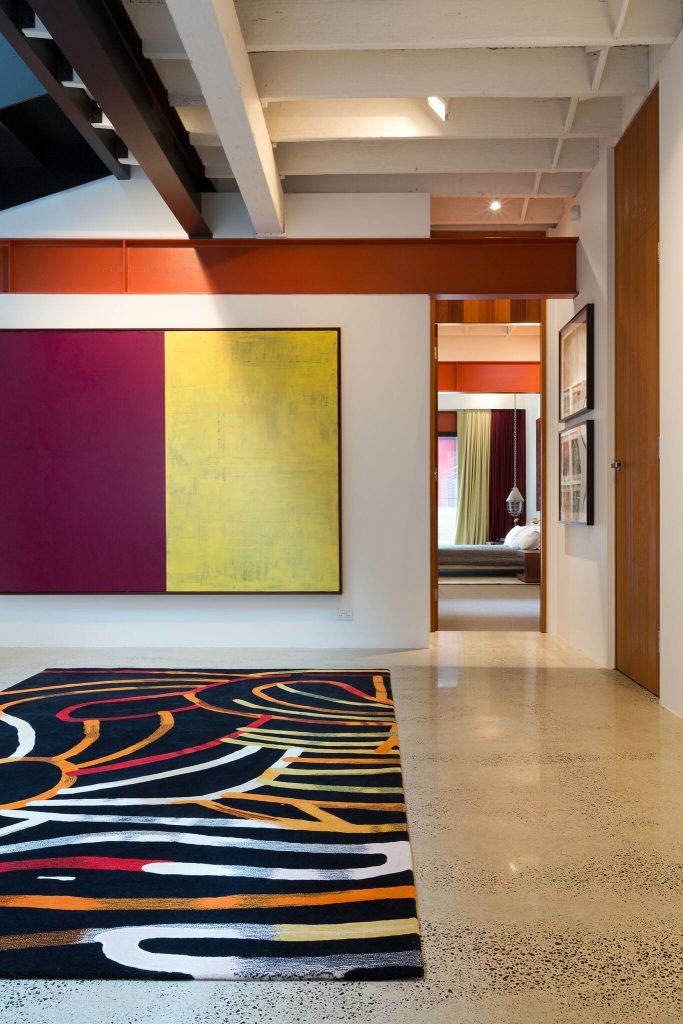
Designer Rugs have a long history of collaborations that break down the barriers between creative fields as diverse as architecture, design, fashion and fine art. One of the most exciting such collaborations, bringing together art and interior design, is the Atnwengerrp Collection featuring the work of celebrated Utopia artist Minnie Pwerle.
Depicting the traditional ceremonial designs painted on women’s bodies in the Atnwengerrp region, Minnie’s work is known for her free and energetic use of line and colour, creating paintings that appear strikingly contemporary while also imbued with meaning and tradition. Now, transformed into rugs of the highest quality in hand-tufted New Zealand wool, her work is given a new context, and interiors of home and commercial spaces have a new opportunity to include Minnie’s artwork in their spaces.
In 1999, at the age of 80, Minnie put paint to canvas for the first time, beginning an unusually creative and prolific seven-year period. In this short time, she became one of Australia’s most sought-after artists and her work found its way into prestigious collections all around the world. This period in her eighties came toward the end of an extraordinary life that encompassed marriage, children and the trauma of having her first-born child taken as one of the Stolen Generations. Born in the Utopia region around 1910, her country was Atnwengerrp and languages were Anmatyerra and Alyawarra. Her first child, Barbara Weir, was born to white station owner Jack Weir, and as she was deemed a ‘half caste’ child by the Native Welfare Authority, Barbara was taken away. Minnie later married and had six other children. She did not see her first daughter again for many years until she returned to the Utopia region, where she lived with her children and eventually began to paint in the late 1990s.
Minnie’s painting depicts her Dreaming, which includes Bush Melon, Awelye-Atwengerrp, and Bush Melon Seed. The patterns represented in her paintings are the designs that are painted on women’s upper body during ceremonies in Atwengerrp country. Each with their own distinctive patterns, they express Minnie’s connection to the land and her Dreaming. The Bush Melon is an important source of Bush Tucker, found only in the Atwengerrp region. Minnie and the other women would collect this fruit and scrape the seeds from the centre, either eating the fresh fruit right away, or drying it and saving it for seasons when the Bush Melon was scarce.
This strong physical and ceremonial connection to her land is keenly felt in her work, yet while the roots of this Dreaming are clearly ancient, it is evident that Minnie’s connection is deeply a part of her present, not just an important part of her heritage. It is perhaps this fact that her Dreaming and culture are so current and alive for Minnie that gives her work a very contemporary aesthetic and feel. Another reason is that, while the traditional colours of the land are ochres and whites, Minnie was unafraid to explore the full spectrum of colours available to her in acrylic paints, opening a new avenue of visual expression. With her bold use of colour, free-flowing lines and graphic pattern, her work instantly attracted the attention of galleries and collectors and remains in high-demand today.
In 2008 Designer Rugs released the Atnwengerrp Collection, the culmination of two years of work developing the designs in partnership with Minnie’s grandson, Indigenous art dealer Fred Torrens, and Jenny Hillman of Waterhole Art. Jenny recognised the graphic potential of Minnie’s paintings to translate into rug design, and while Indigenous art had never been represented in this form, Designer Rugs’ directors were familiar with her work and excited to be given the chance to create something unique with such a significant collaboration. The collection was also an opportunity to help to support Minnie’s Utopia community through royalties, and Designer Rugs took the task of doing her work justice very seriously.
The process of developing the collection began with Fred and Jenny selecting designs that they felt would best translate into rugs, resulting in a collection of 7 unique designs. With two black and white designs and 5 in colour, Designer Rugs painstakingly selected colours and exhaustively sampled the colours and rug makers, to ensure the final products faithfully represented the vibrancy of her incredible work.
‘Celebration’ is the brightest of all the designs in the collection, using the full spectrum of pink to orange in a joyful style that is detailed and complex, yet with a distinct overall unity. ‘Campfire’, another colourful design from the collection instantly evokes the image of the bright lines of light created by the fire’s sparks in the brilliant black of the night sky, with a strong sense of movement and almost of life-force. ‘Night Dance’ also captures the sense of the dark night but uses straighter, geometric lines to show the distinct movement of dancers in the dark. This motif is continued in ‘Dance Lines’, which again makes use of straight lines, this time in broad, painterly strokes that all move in the same direction.
In stark contrast, ‘Women’s Gathering’ and ‘Camp Sites’ are organic, circular designs that echo the swirls and patterns of the traditional breast designs Minnie used in ceremonial body painting. Despite this affinity of line, the two are nonetheless strikingly different, where ‘Women’s Gathering’ used stark black and white in a pattern that doubles over and crosses itself, ‘Camp Sites’ swirls in shades of blue clearly depict individual circles, calling to mind the circumference of the camp site. While the seven designs in the collection are all clearly unique, they also unsurprisingly seem to ‘speak’ to each other through the shared language of Minnie’s Dreaming. ‘Body Paint’, the seventh design, captures elements of all the other rugs in the collection, from the restrained colour palette of ‘Women’s Gathering’, to the use of line, which combines the swirling circles of ‘Camp Sites’, ‘Celebration’ and ‘Camp Fire’ and also the straighter, painterly strokes of ‘Dance Lines’.
Viewed together, the collection is like an exhibition, drawing you in and giving you a sense of context and narrative between the individual pieces. Separately, the power of each is the implicit sense of something more, a deeper meaning that is imbued through each and gives the viewer a glimpse into a history and culture that stretches back thousands of years and lives on today in Minnie’s descendants and her extraordinary work. The Atnwengerrp Collection is a rare chance to support this legacy through Designer Rugs’ royalties program, and to have a rug of the highest quality that is also a piece of art and part of Australia’s first rug collection in collaboration with an Indigenous artist.










































